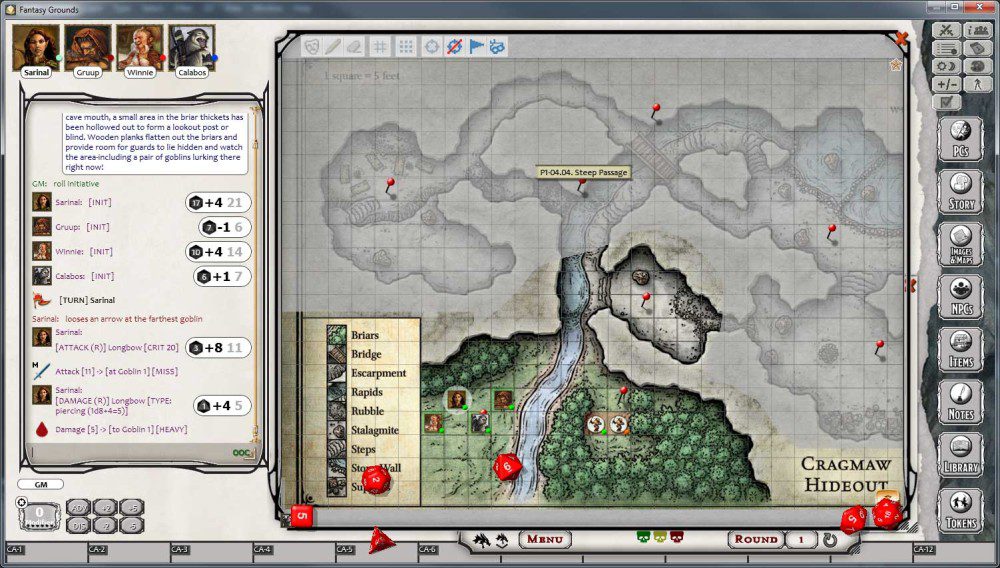Now in Simulator choose the following in the navigation Hardware Device Manage Devices. Then from the popup choose the Simulators tab and from the list of simulators just highlight the relevant simulator and press the delete button. You can also press the ctrl to get a popup menu when selecting the simulator. Next delete the files on your. In the Activity Monitor app on your Mac, click Memory (or use the Touch Bar) to see the following in the bottom of the window. Memory Pressure: Graphically represents how efficiently your memory is serving your processing needs. Memory pressure is determined by the amount of free memory, swap rate, wired memory, and file cached memory.
 installed Tabletop Simulator via Steam on OSX
installed Tabletop Simulator via Steam on OSXMacBook Pro (Retina, 15-inch, Mid 2015)
2.2Ghz Intel Core i7
Memory: 16 Gb
The fans are constantly on and at idol with no game loaded the cpu is constant around 60% at its best. Last night while playing 2 player onitama via 'multiplayer' it was fluctuating between 120% and 140%. The machine case was getting Very hot.
info attached:

* ~/Library/Logs/Unity/Player.log
* screenshots of 'top' showing process %
Online Mac Os Simulator
...... more similar previous ......
NullReferenceException: Object reference not set to an instance of an object
at TouchScript.Gestures.LongPressGesture.set_Distance Limit (Single value) [0x00000] in <filename unknown>:0
at TouchHandlerScript.Awake () [0x00000] in <filename unknown>:0
(Filename: Line: -1)
DontDestroyOnLoad only work for root GameObjects or components on root GameObjects.
(Filename: Line: 481)
NullReferenceException: Object reference not set to an instance of an object
at TouchScript.Gestures.TapGesture.OnEnable () [0x00000] in <filename unknown>:0
UnityEngine.GameObject:Internal_AddComponentWithTy pe(Type)
UnityEngine.GameObject:AddComponent(Type)
UnityEngine.GameObject:AddComponent()
TouchHandlerScript:Awake()
(Filename: Line: -1)
NullReferenceException: Object reference not set to an instance of an object
at TouchScript.Gestures.TapGesture.OnEnable () [0x00000] in <filename unknown>:0
UnityEngine.GameObject:Internal_AddComponentWithTy pe(Type)
UnityEngine.GameObject:AddComponent(Type)
UnityEngine.GameObject:AddComponent()
TouchHandlerScript:Awake()
(Filename: Line: -1)
NullReferenceException: Object reference not set to an instance of an object
at TouchScript.Gestures.LongPressGesture.OnEnable () [0x00000] in <filename unknown>:0
UnityEngine.GameObject:Internal_AddComponentWithTy pe(Type)
UnityEngine.GameObject:AddComponent(Type)
UnityEngine.GameObject:AddComponent()
TouchHandlerScript:Awake()
(Filename: Line: -1)
NullReferenceException: Object reference not set to an instance of an object
at TouchScript.Gestures.Base.TransformGestureBase.upd ateMinScreenPointsDistance () [0x00000] in <filename unknown>:0
at TouchScript.Gestures.Base.TransformGestureBase.OnE nable () [0x00000] in <filename unknown>:0
at TouchScript.Gestures.TransformGesture.OnEnable () [0x00000] in <filename unknown>:0
UnityEngine.GameObject:Internal_AddComponentWithTy pe(Type)
UnityEngine.GameObject:AddComponent(Type)
UnityEngine.GameObject:AddComponent()
TouchHandlerScript:Awake()
(Filename: Line: -1)
NullReferenceException: Object reference not set to an instance of an object
at TouchScript.Gestures.Base.TransformGestureBase.upd ateMinScreenPointsDistance () [0x00000] in <filename unknown>:0
at TouchScript.Gestures.Base.TransformGestureBase.OnE nable () [0x00000] in <filename unknown>:0
at TouchScript.Gestures.TransformGesture.OnEnable () [0x00000] in <filename unknown>:0
UnityEngine.GameObject:Internal_AddComponentWithTy pe(Type)
UnityEngine.GameObject:AddComponent(Type)
UnityEngine.GameObject:AddComponent()
TouchHandlerScript:Awake()
(Filename: Line: -1)
NullReferenceException: Object reference not set to an instance of an object
at TouchScript.Gestures.Base.TransformGestureBase.upd ateMinScreenPointsDistance () [0x00000] in <filename unknown>:0
at TouchScript.Gestures.Base.TransformGestureBase.OnE nable () [0x00000] in <filename unknown>:0
at TouchScript.Gestures.TransformGesture.OnEnable () [0x00000] in <filename unknown>:0
UnityEngine.GameObject:Internal_AddComponentWithTy pe(Type)
UnityEngine.GameObject:AddComponent(Type)
UnityEngine.GameObject:AddComponent()
TouchHandlerScript:Awake()
(Filename: Line: -1)
NullReferenceException: Object reference not set to an instance of an object
at TouchScript.Gestures.LongPressGesture.set_Distance Limit (Single value) [0x00000] in <filename unknown>:0
at TouchHandlerScript.Awake () [0x00000] in <filename unknown>:0
(Filename: Line: -1)
Setting up 4 worker threads for Enlighten.
Thread -> id: 70000fe75000 -> priority: 1
Thread -> id: 70000fef8000 -> priority: 1
Thread -> id: 700010127000 -> priority: 1
Thread -> id: 70001022d000 -> priority: 1
NullReferenceException: Object reference not set to an instance of an object
at GizmoScript.OnDestroy () [0x00000] in <filename unknown>:0
Tabletop Simulator Mac Catalina
- 01_before_loading_steam.jpg (18.9 KB, 10 views)
- 02_steam_starts.jpg (19.0 KB, 5 views)
- 03_splash_screen.jpg (19.3 KB, 4 views)
- 04_table_only.jpg (19.2 KB, 4 views)
- 05_game_loaded.jpg (19.2 KB, 6 views)
Activity Monitor User Guide
You can see the amount of system memory being used on your Mac.
Tabletop Simulator Mac Os Catalina Patcher
In the Activity Monitor app on your Mac, click Memory (or use the Touch Bar) to see the following in the bottom of the window:
Memory Pressure: Graphically represents how efficiently your memory is serving your processing needs.
Memory pressure is determined by the amount of free memory, swap rate, wired memory, and file cached memory.
Physical Memory: The amount of RAM installed.
Memory Used: The amount of RAM being used. To the right, you can see where the memory is allocated.
App Memory: The amount of memory being used by apps.
Wired Memory: Memory required by the system to operate. This memory can’t be cached and must stay in RAM, so it’s not available to other apps.
Compressed: The amount of memory that has been compressed to make more RAM available.
When your computer approaches its maximum memory capacity, inactive apps in memory are compressed, making more memory available to active apps. Select the Compressed Memory column, then look in the VM Compressed column for each app to see the amount of memory being compressed for that app.
Cached Files: The size of files cached by the system into unused memory to improve performance.
Until this memory is overwritten, it remains cached, so it can help improve performance when you reopen the app.
Swap Used: The amount of space being used on your startup disk to swap unused files to and from RAM.
To display more columns, choose View > Columns, then choose the columns you want to show.
You can use Activity Monitor to determine if your Mac could use more RAM.
